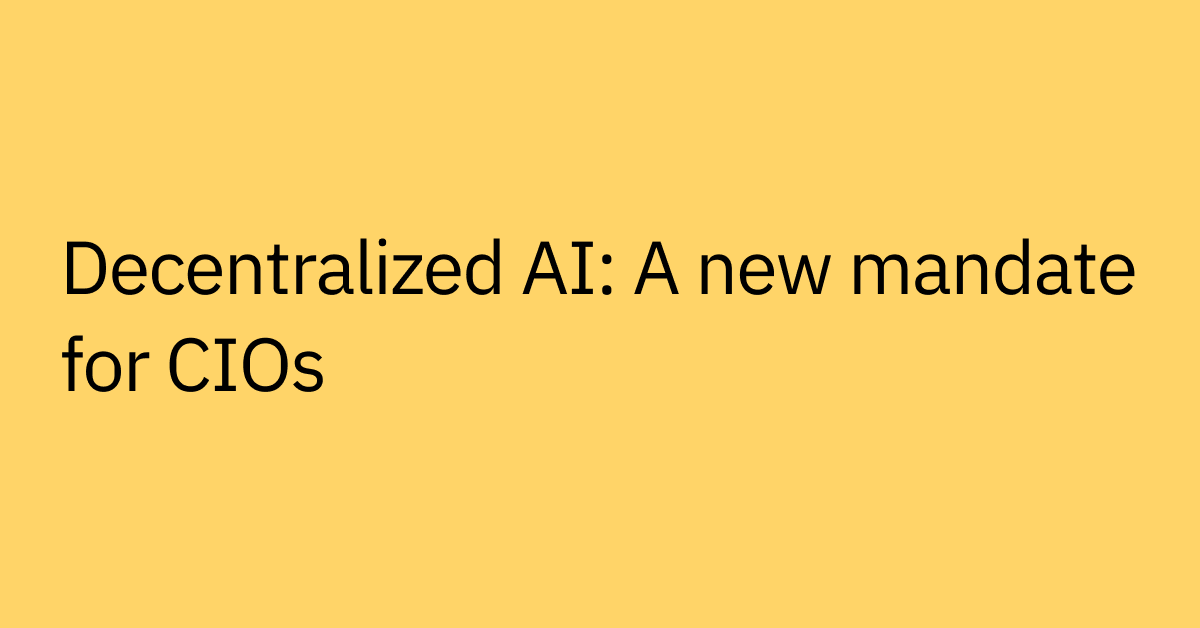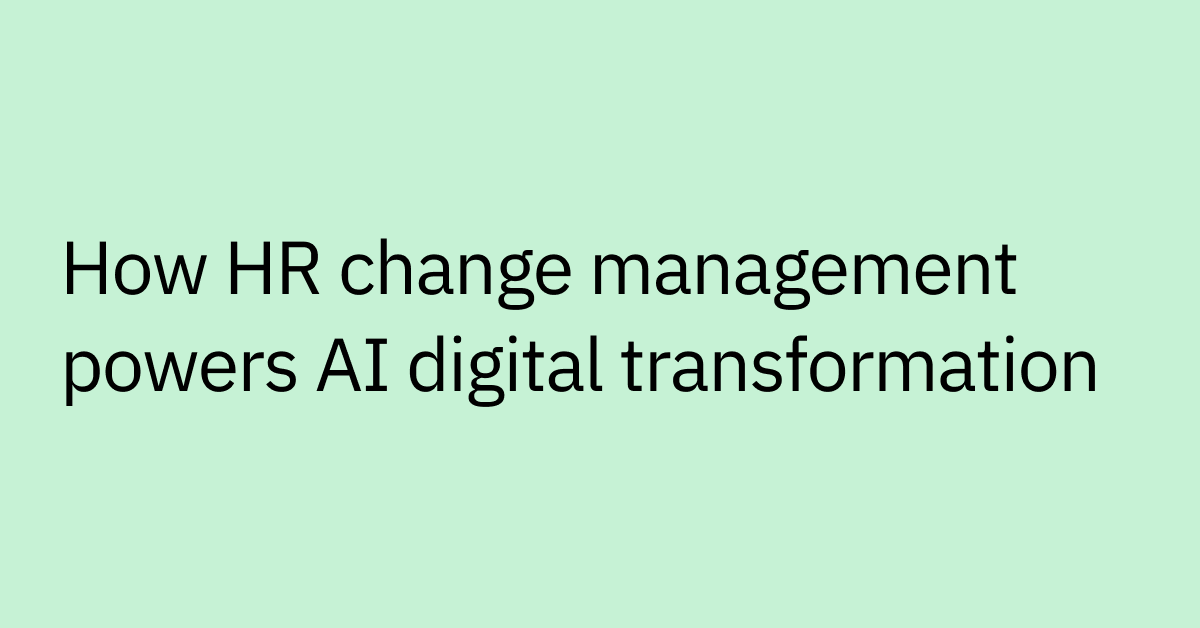Table of contents
Highlights
- Onboarding should go beyond checklists: Unlike traditional approaches, modern onboarding calls for cross-functional coordination, automation, and personalization across IT, HR, and compliance to support remote and hybrid teams.
- Start onboarding before day one: Preboarding reduces new hires’ first-day friction and builds early engagement. Send welcome materials, set up accounts, and provide access to essential resources in advance.
- Automate repetitive workflows with AI: Streamline app provisioning, ID setup, and FAQ responses to scale onboarding efficiently and minimize delays for both employees and HR teams.
- Avoid common pitfalls: Manual processes, generic experiences, and lack of visibility frustrate new hires and slow their productivity.
- Make onboarding smarter with AI: Deliver real-time, personalized support through tools like Slack and Teams while automating routine tasks to accelerate time-to-productivity.
Onboarding is an employee’s first impression of your company culture, and it sets the tone for retention. When new hires feel welcomed, supported, and equipped, they’re far more likely to stay engaged and hit the ground running.
But when onboarding is clunky or outdated, the impact is immediate—and costly. Poor onboarding leads to disengagement, delayed productivity, and higher attrition rates.
When replacing a single employee can cost up to three to four times that worker’s salary, low retention has a huge impact on the bottom line. But beyond turnover, disengaged employees drain enormous value—in 2023 alone, they cost the global economy an estimated $8.8 trillion in lost productivity.
The problem is that many companies still rely on manual checklists, scattered systems, and slow processes to bring new team members up to speed. These traditional approaches frustrate new hires, drain valuable time from HR and IT, and ultimately hold back the business.
That’s why modern onboarding needs to look very different—and why AI and automation are key enablers. Done right, they make onboarding:
- Efficient enough to remove unnecessary delays
- Personalized so every employee feels seen
- Scalable to support today’s hybrid and global workforces
What is employee onboarding, and why does it need to evolve?
Employee onboarding is the structured process of helping new hires integrate into your organization. Usually, it involves giving them the tools, information, access, and support they need to become productive and engaged in their new roles. When onboarding is done well, new employees feel connected, confident, and aligned with the team from day one.
The modern workforce changed in ways many people never would have imagined. So the way companies approach onboarding has to evolve right alongside it.
Traditional methods that rely on manual steps, scattered systems, and outdated onboarding checklists aren’t enough to support today’s fast-moving, often hybrid workplaces. Employees expect a seamless start that matches the pace and flexibility of the modern workplace, and companies need onboarding processes that scale without losing the personal touch.
Why traditional onboarding falls short
For most companies, onboarding still means juggling spreadsheets and sending endless reminder emails while new hires wait on IT for access. What should feel like an exciting start often turns into a frustrating scavenger hunt of:
- Filling out repetitive forms
- Chasing passwords and system access
- Piecing together instructions from multiple teams
This isn’t just frustrating—it’s expensive:
- On the business side, every delay slows down time-to-productivity, clogs IT and HR with extra tickets, and frustrates managers and teams who can’t move projects forward.
- For employees, the human side cuts deeper. A clunky first impression leaves new hires feeling overlooked and disconnected, just when they should feel most energized. So it’s no surprise that 30% of people have quit at least one job within 90 days, citing issues like bad experiences and culture mismatches.
As organizations expand globally and embrace remote work, the cracks widen. Disconnected systems and manual processes simply can’t keep up. What once worked for small, centralized teams now creates bottlenecks across departments and different time zones.
That’s why onboarding has to shift toward a process that’s consistent, scalable, and built around the employee experience.
Learn how to modernize your onboarding process with our Guide to Enterprise HR Onboarding Automation.
How AI enables employee onboarding best practices
Onboarding is a new employee’s first look at what your company values. A smooth, welcoming process signals that you’re invested in their success. A clunky one does the opposite. These early impressions shape how confident, connected, and committed employees feel as they settle into their roles.
AI automation and agents for HR are powered by a combination of key technologies that allow them to autonomously perform complex tasks. At its core, this tech leverages Large Language Models (LLMs) and Generative AI to process and understand human language.
This allows AI assistants to interact with employees, draft content like job descriptions or performance reviews, and answer questions. To move beyond simple responses, these assistants are integrated with HR systems using APIs, connectivity that enables them to access, analyze, and act on data in real-time.
The "agentic" part of the technology involves decision-making algorithms that empower the AI to plan and execute multi-step workflows without constant human prompts. For example, an agent can be instructed to "onboard a new employee," and it is able to automatically handle tasks like:
- Creating user accounts
- Sending out welcome emails
- Assigning training modules across systems
This is a significant step beyond traditional, rule-based automation, as AI agents can reason, learn from outcomes, and adapt to new situations.
By weaving AI and agentic AI into the process, companies can turn common pain points into opportunities for efficiency, personalization, and scale.
1. Start onboarding before the first day (preboarding)
Onboarding new employees doesn’t have to wait until someone walks through the doors or logs in. Before day one:
- Send brief welcome emails or videos that help set expectations and spark excitement.
- Ship equipment or prepare logins early, so the new hire is ready to plug in on day one.
These preboarding steps help ease nerves, build confidence, and ensure every new employee is ready to hit the ground running.
Action: Use simple automated reminders to ensure nothing gets overlooked and that every new hire begins their journey feeling prepared and valued.
AI fix: AI assistants can streamline onboarding by autonomously managing administrative tasks like document collection and account provisioning. They can also provide a personalized and interactive experience for new hires, offering tailored guidance and answering questions in real-time.
2. Automate every element of week one onboarding workflows
The first week is packed with repetitive but necessary tasks—software provisioning, ID setup, payroll enrollment, and answering FAQs. But with the right AI-powered solution, you can automate all of these end-to-end.
Instead of waiting on IT or HR, an integrated AI assistant can ensure accounts and tools are ready before day one. If new hires have any questions, the AI assistant can answer them on demand, right in a familiar tool like Slack or Teams.
You can also extend automation with agentic AI to dynamic requests, such as troubleshooting access issues or escalating blockers directly to the right team.
Action: Map every onboarding step that still needs manual input, then build AI-driven workflows and auto-escalations so devices, accounts, and system access are ready before a new employee starts.
AI fix: Agentic AI assistants can provision apps like Slack, Salesforce, or Workday automatically, based on the new hire’s role and department. They also flag incomplete steps—say, if an email account hasn’t been created—and nudge IT or HR before day one, preventing delays.
3. Deliver personalized onboarding experiences
One-size-fits-all onboarding rarely works. Roles, locations, and seniority levels all differ, and your process should reflect that.
A software engineer might need immediate access to GitHub and their team-specific repository, while a sales rep will need CRM training and client database permissions. Personalized onboarding ensures each person gets what’s most relevant to them.
Action: Create personalized AI workflows and use them to auto-assign tailored onboarding tasks and training based on employee data stored across systems.
AI fix: AI assistants can design personalized onboarding journeys that match each new hire’s profile. A developer might get auto-assigned a coding environment setup, security protocols, and a technical mentor, while providing a marketer with brand guidelines and campaign tools. With AI,language and regional differences are factored in too, so employees feel supported wherever they are.
4. Support remote and global onboarding seamlessly
International hires often face delays due to time zone challenges and language barriers, leaving them feeling frustrated and disconnected.
Action: Deploy multilingual AI assistants as a “first line of support,” so every new hire, from San Francisco to Singapore, gets consistent onboarding help.
AI fix: AI assistants are available 24/7/365, offering around-the-clock support. They can instantly answer questions about policies, tools, or processes, no matter where someone is located.
Even better, multilingual AI assistants can converse and translate knowledge into multiple languages, making information accessible and relevant to every new hire worldwide.
5. Centralize onboarding communications
Scattered emails, PDFs, and one-off messages don’t make employees feel supported. A better approach is to bring everything into one central hub, like your intranet, Slack, or Microsoft Teams.
A central hub gives new hires a single source of truth for policies, training, and tasks. It also creates accountability, since managers and HR can track progress without endless reminders. Plus, every new employee gets the same, consistent experience— no matter their location or role.
Action: Feed your policies and training content into the AI, then configure it to summarize answers and provide source links so employees learn while staying self-sufficient.
AI fix: AI assistants can pull instant, approved answers from your knowledge bases, intranets, and policy documents. No more digging through portals—employees just message the AI assistant in Slack or Teams and get instant, accurate answers.
6. Track onboarding metrics
You can’t improve what you don’t measure. Tracking key metrics like time-to-productivity, IT ticket volume, and new employee satisfaction shows whether your onboarding process is working.
Action: Set clear onboarding KPIs, automate survey distribution, and connect AI to collaboration data for real-time insights. With this visibility, HR and IT can step in early to remove friction and continuously refine the onboarding journey.
AI fix: AI helps to make measurement consistent and actionable by capturing key metrics in real time, it can automatically flag missed steps and escalated to the relevant party
6. Extend onboarding beyond the first week
Onboarding doesn’t end after Friday. Plan milestones for 30, 60, and 90 days, including training modules and mentorship check-ins, to keep new hires supported. For example:
- 30 days: Review role-specific goals.
- 60 days: Introduce advanced tools.
- 90 days: Hold a one-on-one focused on long-term goals and career growth.
This ongoing support builds retention by showing employees you’re invested in them for the long haul.
Action: Treat onboarding as a journey, not a one-week event. Create a roadmap with structured training and mentorship check-ins, so employees feel guided every step of the way.
AI fix: Send automated reminders for 30/60/90-day check-ins and advanced training modules. Consider using agentic AI to proactively nudge mentors and managers, ensuring ongoing support without manual follow-up.
Common onboarding pitfalls—and how to avoid them
Even with the best intentions, onboarding can go off track if you’re not careful. Here are four issues to watch out for.
Overreliance on manual and fragmented workflows
Spreadsheets, email chains, and ticketing systems might get the job done for a handful of new hires, but they don’t scale. Delays pile up, errors slip through, and IT/HR waste hours chasing tasks.
AI fix: Use AI to automate repetitive onboarding tasks like software provisioning, access requests, and policy training with integrated platforms that connect departments.
Delivering a generic experience
Handing the same onboarding checklist to every new hire, regardless of role, location, or seniority, doesn’t work. Engineers wade through irrelevant HR training while sales reps wait for tools they don’t need, making onboarding feel impersonal and increasing the risk of disengagement.
AI fix: Create modular onboarding plans tailored to roles, departments, or regions. Embed AI-powered guidance in Slack or Teams to enhance support and speed up time-to-productivity.
Lack of progress visibility in the onboarding process
Without a clear view of progress, HR, IT, and managers are left guessing where employees stand. New hires, in turn, can feel lost or unsupported. This lack of visibility is an even bigger issue in global and hybrid organizations where different teams need to stay aligned.
AI fix: Use centralized dashboards or tracking systems that give all stakeholders real-time visibility. Set up AI-powered alerts, reminders, and role-based permissions so everyone stays on the same page, and prioritize onboarding software that handles compliance, integrates across systems, and scales globally.
Weak manager involvement/adoption
Hiring managers often don’t know their role in onboarding and even lack the tools to guide new hires effectively. This leaves employees unsupported and unclear on expectations.
AI fix: Equip managers with clear responsibilities, structured checklists, quick training, and automated dashboards to monitor progress. Use AI to send automated nudges and reminders help keep onboarding top of mind, so managers stay consistently involved.
Leverage AI to uplevel onboarding best practices
Great onboarding is essential for productivity, retention, and the overall employee experience. The first days and weeks shape how new hires see your company, and those impressions last.
Modernize onboarding processes with automation, personalization, and seamless collaboration across HR and IT to scale without creating friction.
The Moveworks AI Assistant transforms onboarding by:
- Providing instant answers to HR and IT questions, so employees feel supported and informed from day one—without bogging down support teams.
- Automating routine tasks like account setup, direct deposit, and access requests, freeing your team from endless manual paperwork.
- Integrating securely with your existing HR and IT systems to enable employees get immediate access to the necessary tools.
- Scaling globally with multilingual support, so new hire around the world have a consistent experience.
With Moveworks, onboarding becomes fast, smart, and personalized, so every new hire starts off on the right foot and keeps the momentum going.
See how Moveworks delivers onboarding for the modern workplace.
Frequently Asked Questions
Employee onboarding is the structured process of helping new hires integrate into your organization. It gives them the tools, access, and information they need to succeed, while also introducing them to policies, systems, and their team. Onboarding typically includes completing administrative tasks, setting up technology, and building connections that set employees up for long-term success.
Onboarding shapes the very first impression a new hire has of your company. A strong program makes employees feel welcomed, supported, and connected—which translates into higher engagement, faster productivity, and stronger retention. Weak onboarding often does the opposite, leaving employees confused, disengaged, and more likely to leave early.
A great employee onboarding process accelerates time-to-productivity, reduces support requests, and boosts overall satisfaction. It also strengthens long-term employee retention. In fact, research shows employees who complete a structured onboarding program are significantly more likely to stay beyond their first year.
The initial phase usually takes one to two weeks, but effective onboarding goes much further. A strong program continues through the first 30, 60, and 90 days—and ideally extends across the first year—with ongoing training, mentorship, and performance check-ins that help new hires grow into their roles.
For remote employees, success starts with preparation. Devices and accounts should be ready before day one, and resources should live in a centralized hub. Collaboration tools like Slack or Microsoft Teams make communication seamless, while regular check-ins and personalized support keep remote employees connected and confident. Automation also helps reduce delays by taking routine tasks off everyone’s plate.
Onboarding becomes more complex when employees are spread across locations and time zones. Best practices include centralizing resources in digital hubs, ensuring consistent system access, and keeping communication clear across channels. Automation and AI tools can also scale processes globally, ensuring every employee gets the same seamless experience no matter where they work.
A modern onboarding checklist should include preboarding tasks, IT and system access setup, policy training, role-specific resources, introductions to new team members, and ongoing support or mentorship. It should also track progress and provide clarity on next steps for both employees and managers, ensuring nothing slips through the cracks.
Automation streamlines repetitive onboarding tasks such as provisioning accounts, assigning equipment, and responding to common HR or IT questions so new hires can ramp up quickly. It also helps to reduce manual errors and helps IT and HR teams scale efficiently. Increasingly, agentic AI enhances this automation by resolving more complex or cross-system requests in real time.



